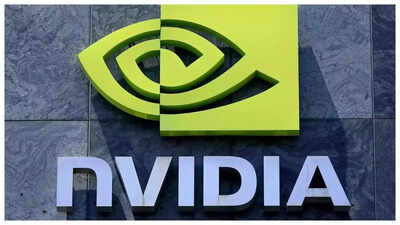ARTICLE AD BOX

Two unidentified
Nvidia customers
accounted for nearly 40% of the chipmaker’s revenue in the July quarter, raising fresh concerns over its heavy dependence on a small set of clients. According to a CNBC report,
Nvidia
disclosed the details in a US Securities and Exchange Commission (SEC) filing last week, but declined to name the buyers.According to the filing, “Customer A” contributed 23% of total revenue and “Customer B” made up 16%. For the first half of the fiscal year, these accounted for 20% and 15% of the total revenue, respectively. In the filing, both are listed as direct customers, meaning they purchase chips to build systems or circuit boards, which are then sold to data centers, cloud providers, or end-users.As per the CNBC report, direct customers are not the end users of Nvidia’s chips. Direct customers here refers to companies that buy Nvidia chips to build into complete systems or circuit boards which they then sell to data centres, cloud providers and end-users. Some of them are original design manufacturers or original equipment manufacturers like Foxconn. Indirect customers, on the other hand, refer to cloud service providers and internet companies that typically buy systems from Nvidia’s direct customers.
In a statement, Nvidia finance chief Colette Kress said that large cloud providers together generated about half of its data center revenue in the quarter, which itself contributed 88% of overall sales. “We have experienced periods where we receive a significant amount of our revenue from a limited number of customers, and this trend may continue,” Nvidia wrote in the filing.That disclosure has fueled speculation that the mystery clients could be big players like Microsoft, Amazon, Google or Oracle, though Nvidia has not confirmed this.Analysts say Nvidia’s fortunes are increasingly tied to how much cloud companies spend on AI infrastructure. “We see limited room for further earnings upside in the near term unless we have clarity on 2026 capex expectations,” HSBC’s Frank Lee wrote in a note.Despite the concentration risk, Nvidia said demand for its AI systems remains strong not only from cloud providers but also enterprises, startups, governments, and “neoclouds” — smaller providers offering AI-focused services. CEO Jensen Huang forecast a $3–$4 trillion
AI infrastructure market
by the end of the decade, with Nvidia targeting a major share.
India’s Gaming Revolution: New Law Changes EVERYTHING



.png)
.png)
.png)
















 3 days ago
8
3 days ago
8








 English (US) ·
English (US) ·